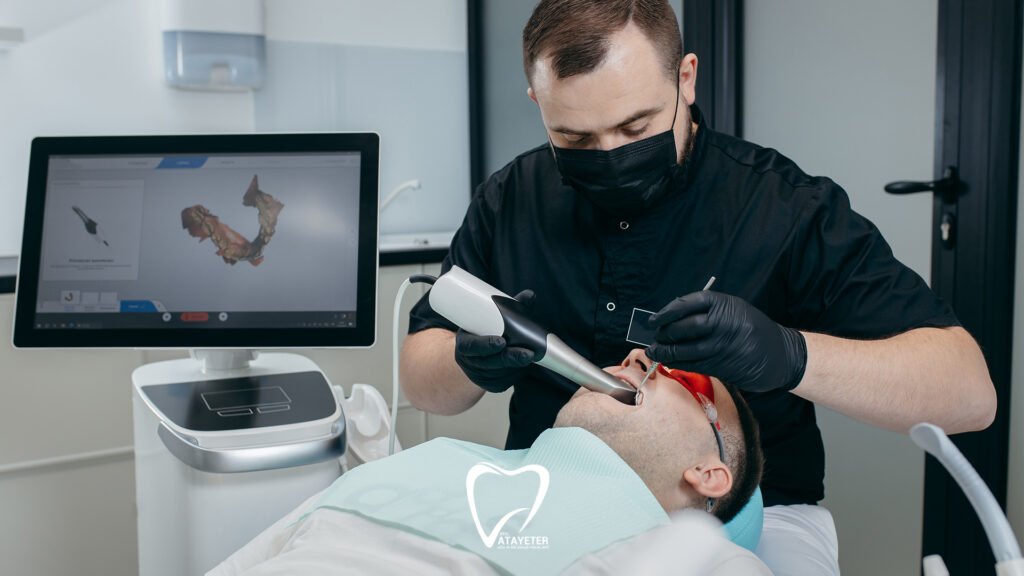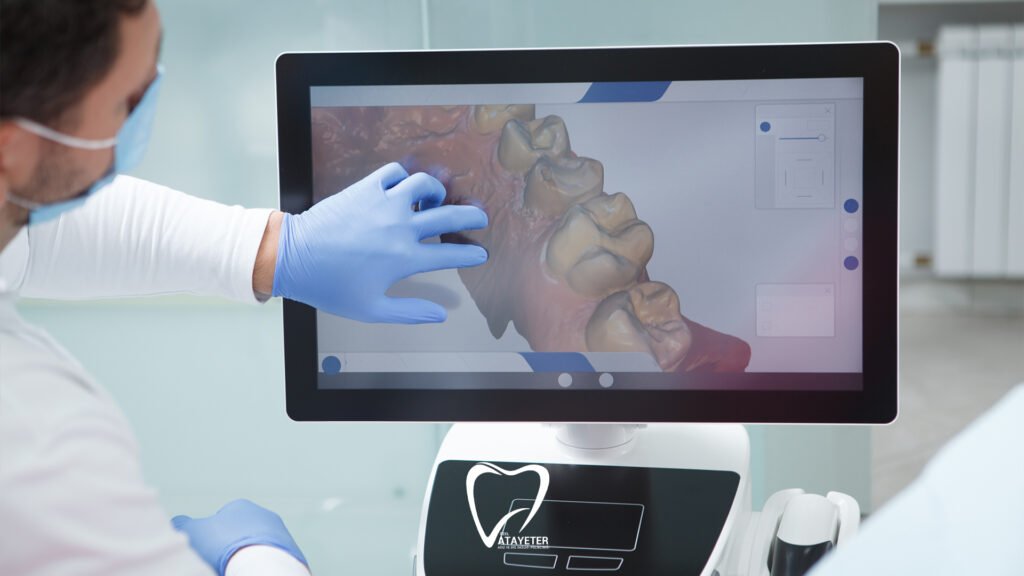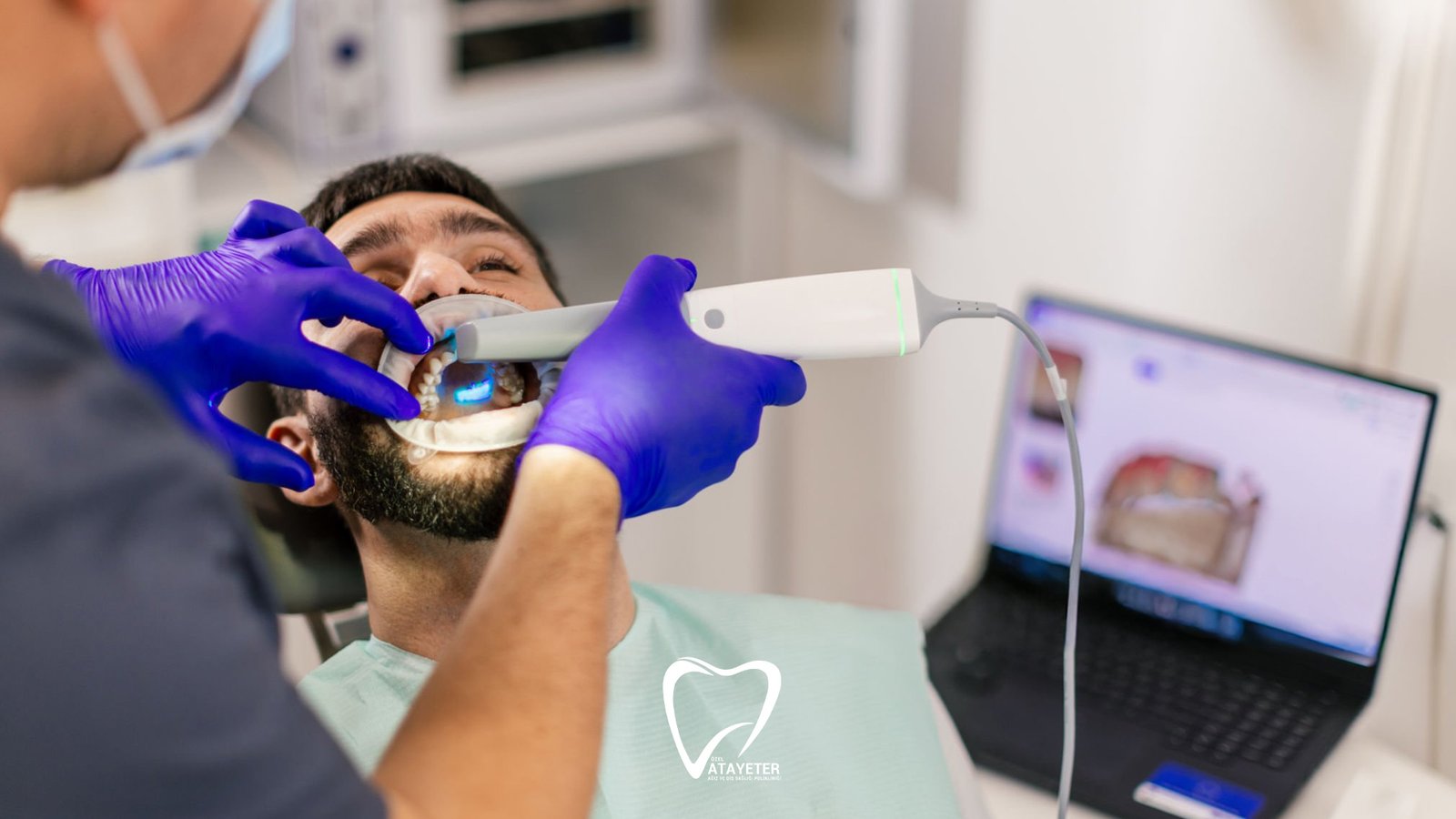What is a Digital Impression?
The world of dentistry has quietly undergone a revolution in recent years. In the past, when we talked about “taking an impression” for crowns, implants, dentures, or orthodontic treatments, most of us pictured the same scene: a doughy material that often felt uncomfortable in the mouth, waiting for several minutes, and the involuntary gag reflex that sometimes followed… For some patients, this step was even the most challenging part of the treatment. Fortunately, those days are behind us.
Digital impression technology brings a completely new breath to dentistry. We are entering a modern era that simplifies, speeds up, and almost perfects the process for both patients and dentists. Materials that once caused discomfort are now replaced by digital scanners that capture even the finest details in seconds. Thanks to this technology, taking an impression is no longer a daunting step; on the contrary, it has become a highly modern method where patients can relax comfortably in the chair while dentists achieve highly accurate results.
Today, digital impressions are more than just an innovation they have become a necessity that enhances patient satisfaction, accelerates treatment, and makes achieving aesthetically pleasing results easier. This gateway to the future of dentistry opens the door to saying goodbye to the traditional impression methods that have long worn out both patients and practitioners.
What is a Digital Impression?
A digital impression is a modern method of capturing the mouth in three dimensions with exceptional precision. This process is done using a small, handheld camera called an “intraoral scanner.” The dentist slowly moves the scanner over the teeth, and the device transfers every detail to a computer within seconds, creating a precise digital model of the patient’s mouth.

The resulting digital model can be examined as if you were taking a tiny tour inside the mouth. It can be zoomed in, rotated, and viewed in detail from different angles. This provides a great advantage for dentists, as even the smallest misalignment, gap, height difference, or need for restoration can be clearly seen. Patients also benefit by watching this 3D representation on the screen, giving them a better understanding of their own oral structure.
For dental technicians, having an exact digital scan of the mouth is extremely valuable. It allows them to design teeth with minimal error, reducing mistakes to nearly zero, while also cutting down on the extra cost of impression materials and lab work for the dentist.
How is a Digital Impression Taken?
The process of taking a digital impression is much faster and more comfortable than you might expect. First, a special intraoral scanner is prepared and placed inside the mouth. The dentist then moves the scanner slowly and carefully over the teeth. During this process, the device captures thousands of images per second and instantly converts them into a 3D model.
The digital model appears immediately on the screen, allowing every detail to be seen clearly. If there is any missing or blurry area during the scan, only that specific section needs to be rescanned, fixing the issue immediately. This makes the process very quick and eliminates the common errors often encountered with traditional impressions. It also provides significant comfort for patient they avoid the gag reflex and the impression is completed much faster.
Overall, the digital impression process has become a method that is almost completely painless for patients while being highly precise and reliable for dentists. Beyond being more comfortable than a routine dental check-up, the resulting digital model allows treatment planning and prosthetic work to be carried out much more accurately and confidently.

Advantages of Digital Impressions
Digital impressions make the process much easier and more enjoyable for both patients and dentists. Let’s start with comfort. The days of doughy materials sitting in your mouth for minutes are gone, and the old, nausea-inducing impression techniques are a thing of the past. Digital scanning is almost completely comfortable, and the process is very quick. Many patients are often surprised, saying, “Is that it?”
Accuracy is the biggest advantage of digital impressions. Scanners can take measurements at the micron level. This is especially important for procedures like implants, crowns, or zirconia restorations, as the results are both visibly natural and long-lasting. Dentists and technicians can plan treatments and prosthetics without missing even the smallest detail.
Another major advantage is instant verification. With traditional methods, a mistake often means starting the process all over again, which wastes time and increases costs. With digital impressions, the dentist can immediately spot any missed or inaccurate areas and simply rescan that section. This saves time, effort, and money.
The process not only speeds up impressions but also significantly shortens overall treatment times. Instead of sending physical molds to the lab, digital files are transmitted in seconds. Crowns, dentures, or clear aligners can be prepared much faster, allowing patients to receive their treatments sooner.
Digital impressions also offer major hygiene benefits. There’s no mixing of materials, no trays to prepare, and no cleanup hassle. Because the method is contact-free, hygiene levels are greatly improved for both patients and dentists.
And, most importantly, for patients who experience nausea during traditional impressions, digital impressions are truly a game-changer. Those who previously struggled with gag reflexes can now undergo the procedure completely comfortably, without any discomfort at all.
Which Treatments Use Digital Impressions?
Digital impression technology has become an indispensable tool in almost all dental treatments. It ensures perfect fit and precision for crowns and bridges using materials like zirconia, porcelain, or e-max. It is essential for the accurate measurements of implant-supported prosthetics, Invisalign and other clear aligner treatments in orthodontics, night guards and bruxism treatments, as well as next-generation removable dentures. By minimizing errors to nearly zero, digital impressions provide both ease and confidence, ensuring optimal aesthetics and fit.

Is a Digital Impression Painful?
No, you won’t feel any pain or discomfort during a digital impression. The tip of the scanner does not harm the teeth or gums; it simply captures images from the surfaces. This makes it easy to use even for patients with very sensitive mouths or a strong gag reflex.
How Long Does a Digital Impression Take?
One of the most common questions, especially from patients prone to nausea, is: “How long does a digital impression take?” The answer is short and reassuring. In most cases, the procedure is completed within just 1–3 minutes. Depending on the number of teeth or the scope of treatment, it may take a few minutes longer. Still, compared to traditional methods, the process is much faster and far more comfortable. In other words, almost before you know it, your mouth has already been fully scanned.
Are Digital Impressions Really More Accurate?
Absolutely and the difference is quite noticeable. With traditional impression methods, the material can expand or contract as it sets, which may prevent an entirely accurate impression. Factors like moisture, saliva, or bleeding in the mouth can also affect the result, and even a slight misplacement of the tray can cause small but significant errors. Additionally, differences can occur during the lab phase when casting or preparing molds, which may compromise the final outcome and lead to wasted time and extra costs.
Digital impressions eliminate all these uncertainties. The process is fully managed by technology, with the scanner capturing data at micron-level precision and processing it instantly on the computer. This ensures that every detail of the mouth is accurately captured, errors are minimized, and treatment can be planned correctly before it even begins.







Comments are closed